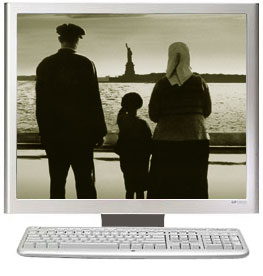 As I promised in my previous post, I will be sharing more about digital storytelling in a future post, but I wanted to share that I have found a family tree sitebuilder I’m excited about. My cousin Rick Zeutenhorst uses it on his site. I really liked the look of my cousin’s site, and based on his recommendation, I decided to get it for two reasons:
As I promised in my previous post, I will be sharing more about digital storytelling in a future post, but I wanted to share that I have found a family tree sitebuilder I’m excited about. My cousin Rick Zeutenhorst uses it on his site. I really liked the look of my cousin’s site, and based on his recommendation, I decided to get it for two reasons:
- Having a site in the cloud will make it easier for me when I migrate. I know I can save gedcoms from software programs, and I have done so in the past, but I have also lost things in the transition, and I think this solution will work for me as well. I can back it up so that I always have a copy of my data, should losing data ever become a worry.
- At this point, the only place I have my data is Ancestry.com, and there may come a day I don’t want to use the site anymore (right now, I’m happy with it, and I obtain tons of information quite easily that I would have to spend a great deal more money to obtain). It’s probably not a good idea to put all my genealogical eggs in one basket, though.
In addition to these two reasons, I also like the idea of having control. I have set living individuals to “private,” but collaborating family members can register for an account.
I opted to start building from scratch rather than using a gedcom because over time, I know errors have crept into my Ancestry tree, and untangling the errors seems to me to be a more daunting task, if you can believe it, than starting over. I also will be able to standardize conventions for dates and place names if I start over. Starting over allows me to be careful and cite sources for information as I work. I am a much more careful and thorough genealogist than I was when I started. I will admit it—I fell prey to the lure of looking for famous ancestors in my tree and often attached unproven connections that appeared uncited in other trees.
I know starting over is a lot of work, but it will prevent me from introducing errors and will allow me to go slowly. As such, the tree is a little spare at the moment. Rest assured I will be adding people, and if you have information to contribute, feel free to contact me.
Some things I really like about the sitebuilding software, which is called TNG: The Next Generation of Genealogy Sitebuilding, are the ways in which photographs are handled and the “Most Wanted” feature. I have really only just begun to explore the possibilities. The site is easy to manage after a small learning curve. The most difficulty I had with it was my original upload didn’t work, so I had to re-upload it to my site. I happen to feel comfortable with managing the back-end of my site, but others’ mileage may vary on that score.
You can view the family tree by clicking this link or by clicking the permanent link in the menu at the top of the page.



 I have been thinking about how to respond to
I have been thinking about how to respond to